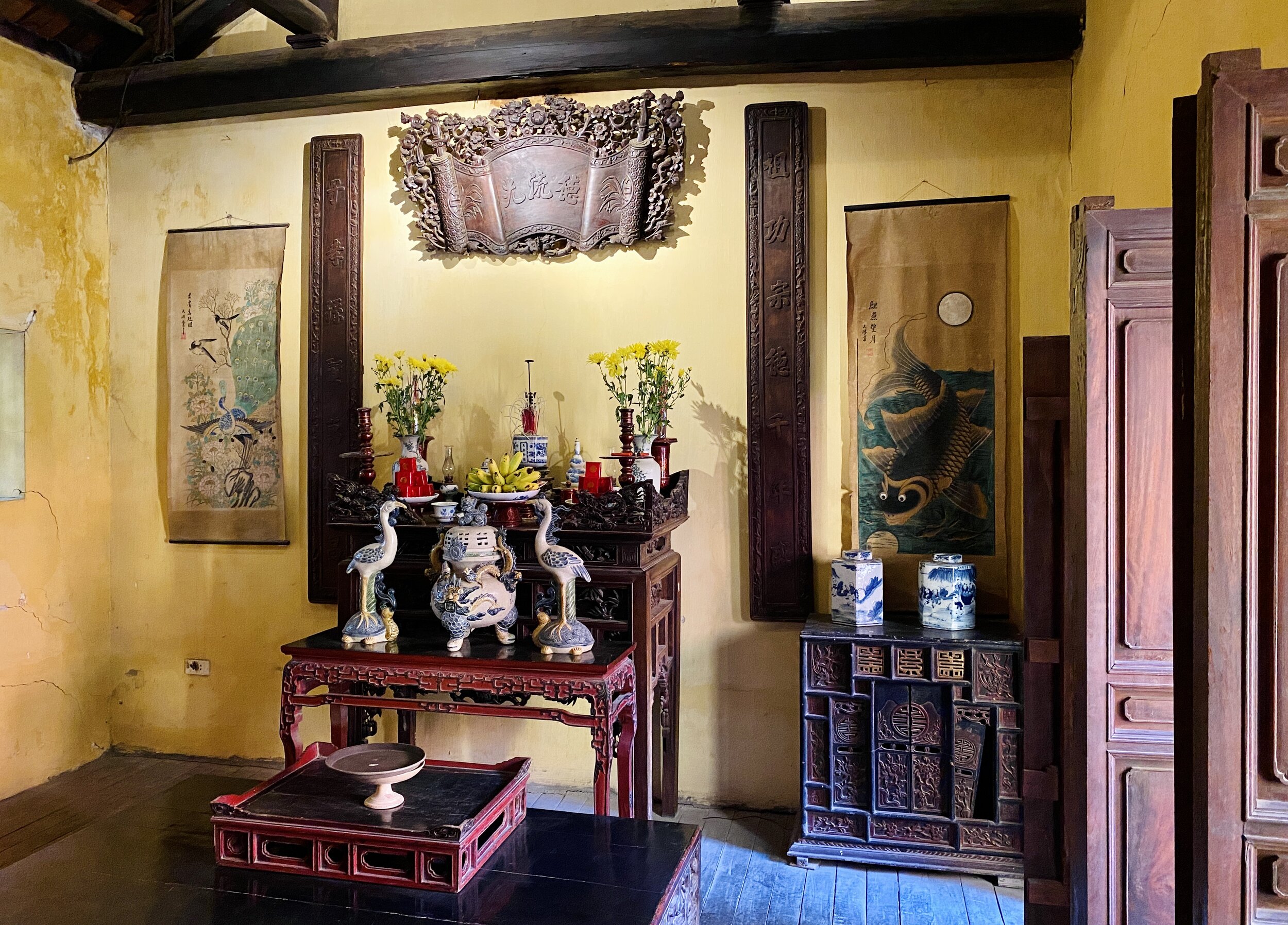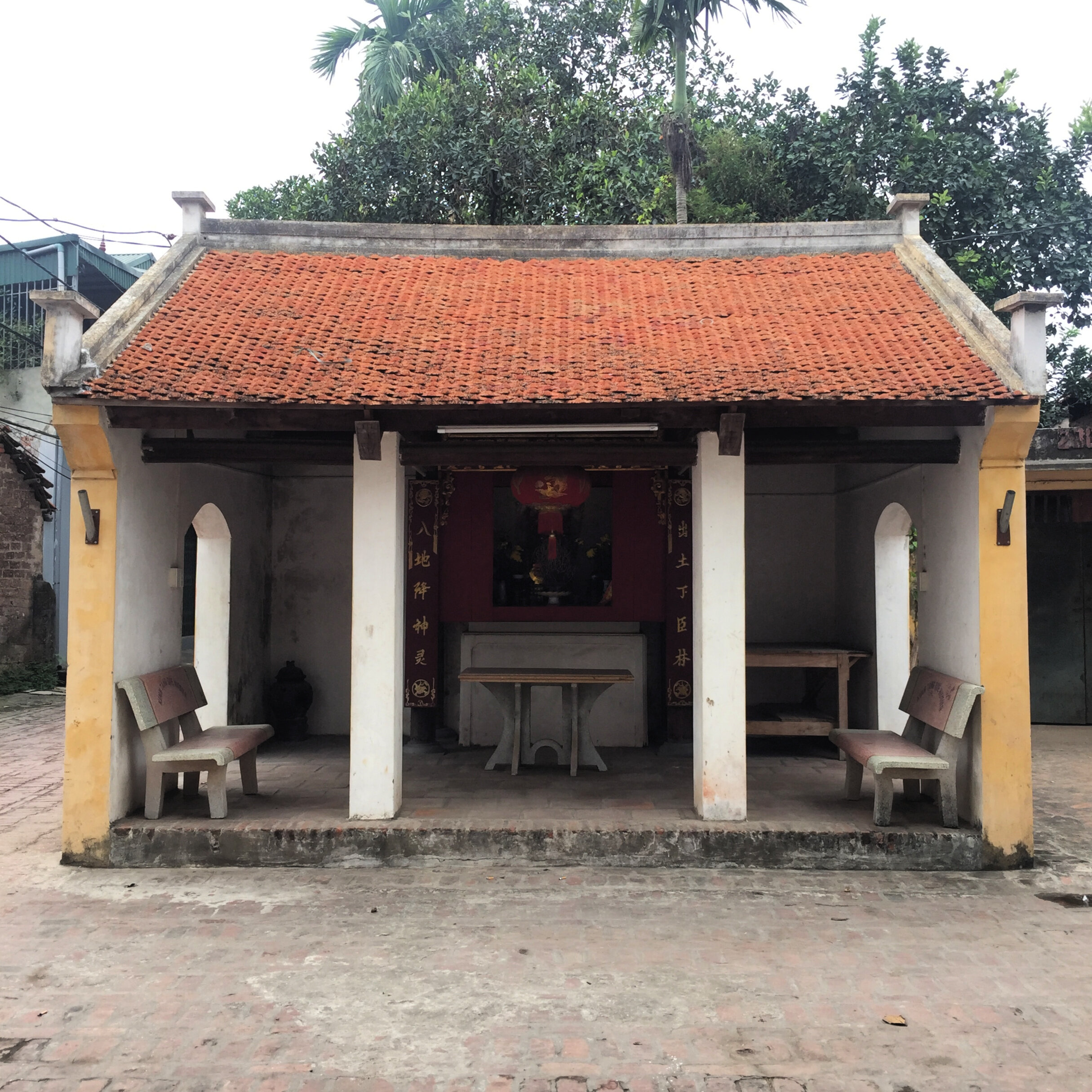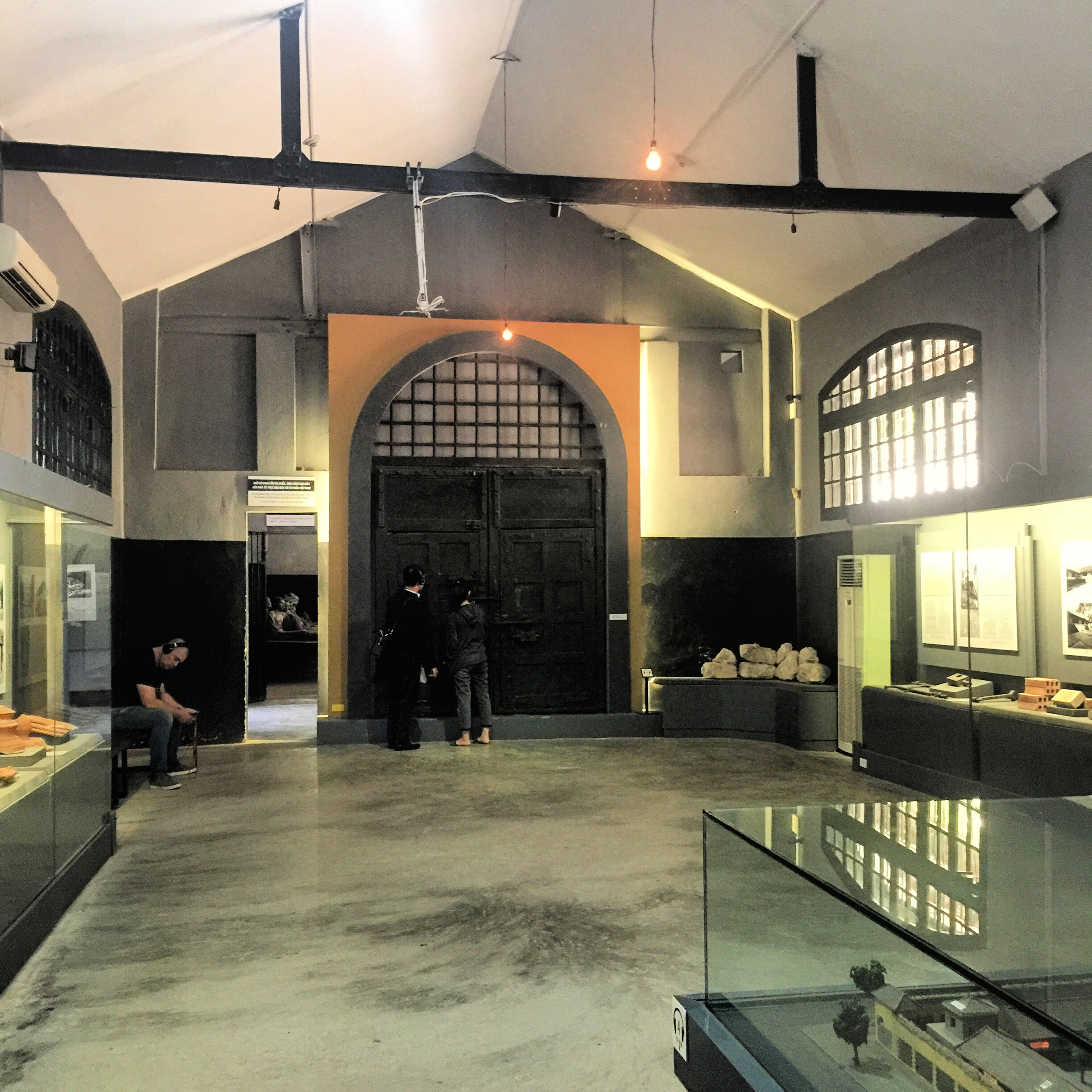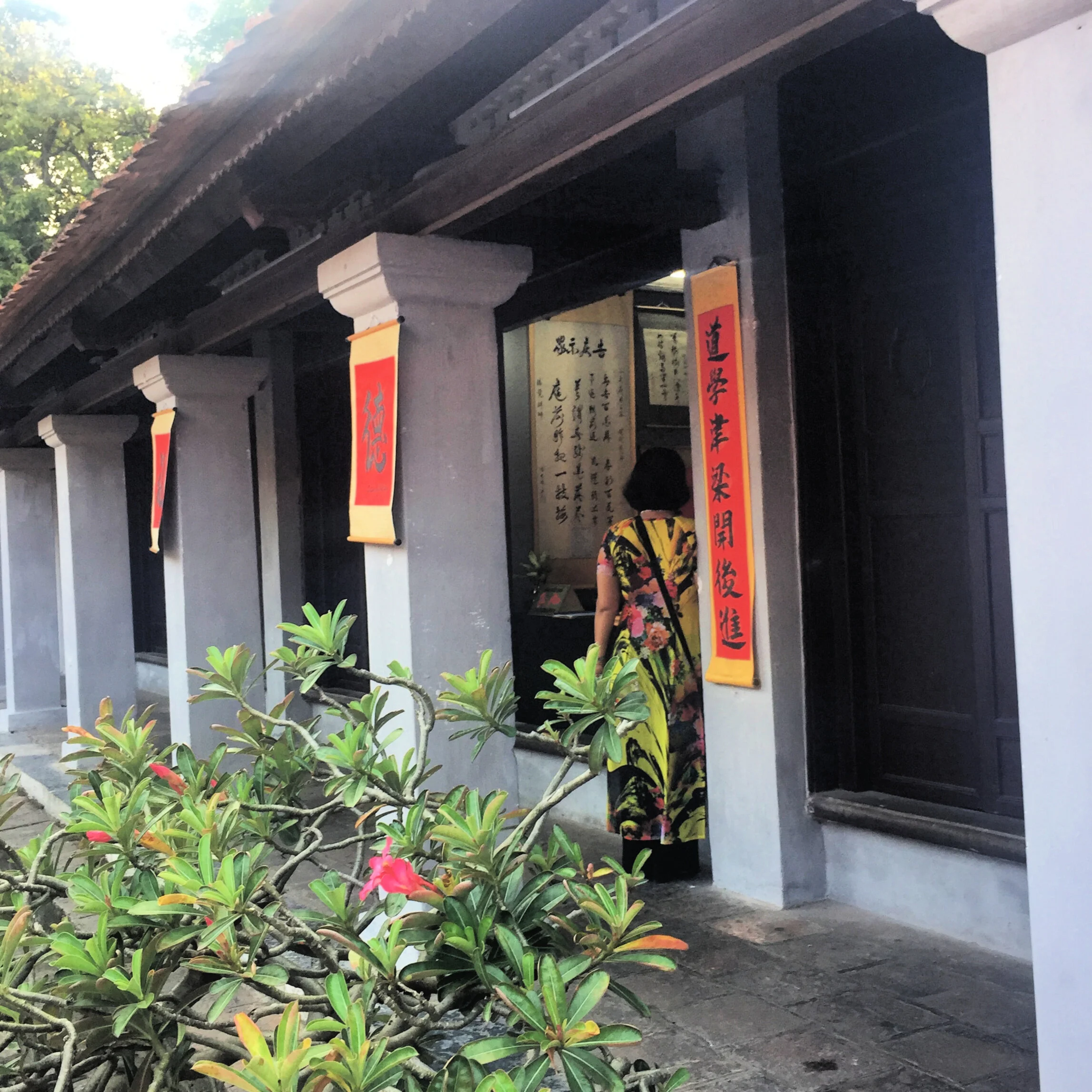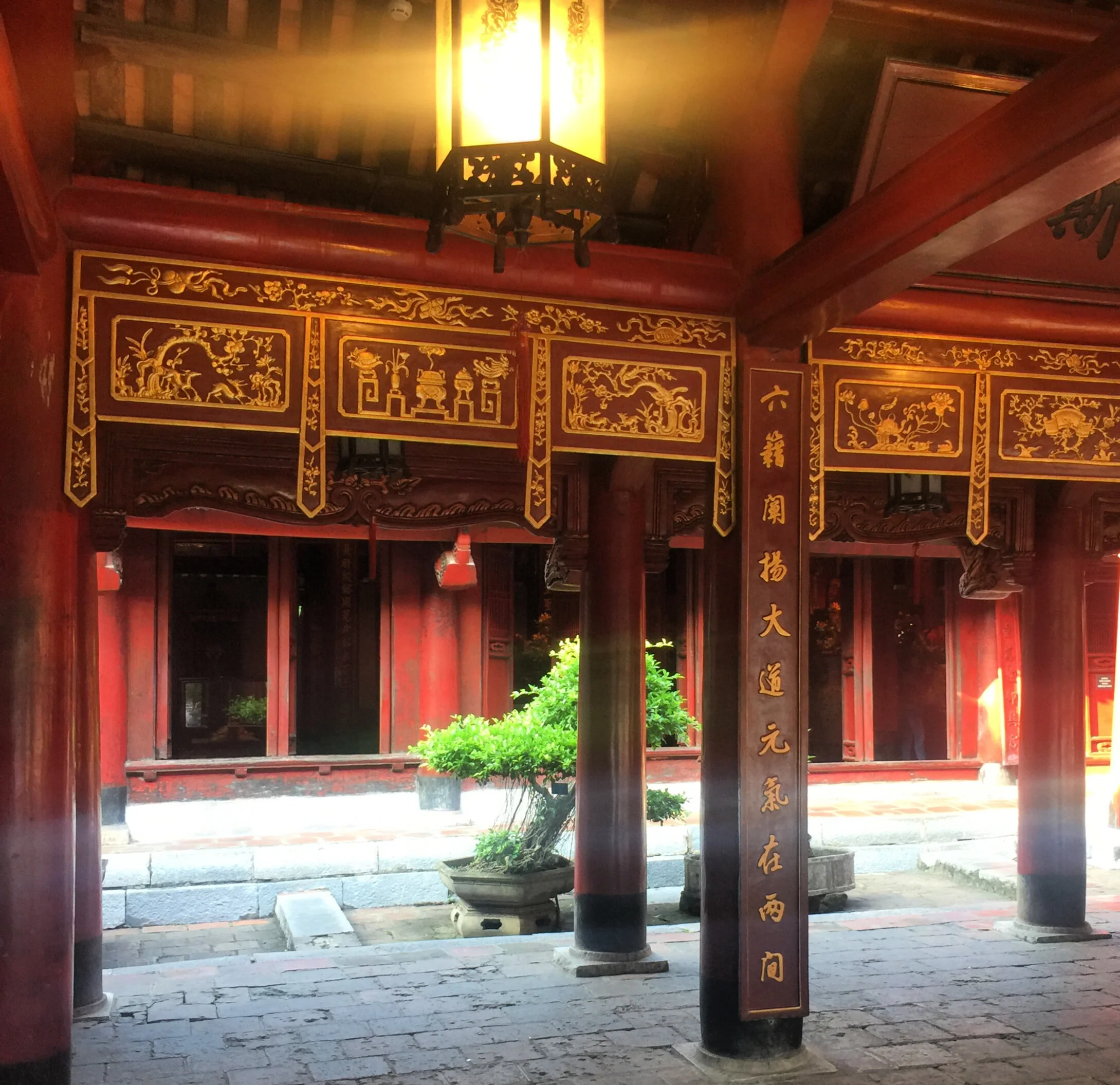At 87 Phố Mã Mây, the ‘Heritage House’ or ‘Ancient House’ is possibly the best preserved 19th century “tube house” in Hanoi. The tube house is a layout unique to Hanoi; it consists of a front house for retail and a back house for living, separated by a courtyard.
Through the 17th and 18th centuries, the wealthy built even further back, with a second courtyard, a second back house, and often a small yard, gate, and back entrance, in the manner of temples. As Hanoi became more densely populated in the 19th century, the wealthy started building upwards, constructing front and back houses with two or even three floors each, often joined by balconies.
This was the prevailing style well through the mid 20th century, when wartime and communism saw houses confiscated and subdivided. Until the 1990s, whole families typically lived in what used to be a single room; 5 different families simultaneously occupied 87 Phố Mã Mây until 1999.
Nowadays, the front and back houses of old properties have often been divided and sold separately. Former courtyards have become communal gardens/parking spots, accessible via very narrow alleys. New construction goes solely upward, with 5 and even 6 floor walkup townhouses being the norm. Outdoor space is incorporated in the form of roof decks and balconies, not courtyards.
a typical surviving tube house: divided and surrounded by modern construction
In addition to the layout, the architectural details at 87 Phố Mã Mây are compelling: unlike many other houses of the era, they incorporate no French colonial influence. The windows onto the street are very small and privacy preserving, while within the house full length shutters and shades open rooms completely to the outdoors. Each set of doors is an odd number of spans, and each threshold is raised, respecting traditional ideas about controlling the flow of good and bad energy in domestic spaces. The roofs are gabled and saltbox, oriented perpendicular to the Western norm.
The final point of interest in the house is the décor. The house has been fitted out with era appropriate furniture and decorative objects, and a small collection of historic ceramics. Aesthetically, the objects are strongly southern Chinese: over thousands of years and intermittent centuries of domination, the two areas have traditionally been much more culturally, linguistically and ethnically fluid than they are today.
The land border between Vietnam and China wasn’t formalized until the 1885 Treaty of Tientsin concluded the Sino-French War; to this day the Chinese name for Vietnam is 越南, meaning ‘South Canton.’ More regrettably, the maritime boundaries between the two countries remain undefined, and are currently an issue of dangerous political, economic and environmental contention.
The house dates to right around the time of the handover from China to France, and I only noticed the odd European or European style antique in the house, like the Thonet type coat rack.
If you know a bit about Vietnamese religion and Chinese symbolism, the meaning of the décor is more engaging. The Vietnamese practice a mixture of Buddhism, Animism and Ancestor Worship; in every house and business there is a shrine where offerings to ancestors are made, incense is burned, and prayers are said. Older, larger, and wealthier houses like this often have a dedicated room with a full size altar; casual businesses or studio apartments will have something shoebox sized just inside the front door or on a shelf in a corner. The scrolls here depict a catfish and peacock: In Chinese, fish is a homophone for affluence, and the thousand-eye tail of the peacock makes it a symbol of protection.
There are also two sets of Fu Lou Shou in the house, one in the altar room and another in the bedroom. San Xing are the three star gods; they are not worshipped, they are just auspicious to keep in the home for believers in feng shui. Fu, Lu and Shou are the gods of good luck, wealth and longevity respectively. They predate and arguably relate to the Christian concept of the Three Wise Men.
In the living areas, characteristically Vietnamese lifestyle goods are included: lacquer betel boxes sit atop a wardrobe; water pipes rest on a low table. If you are familiar with Asian porcelain and ceramics, you will be able to spot regional wares between 150 and 600 years old: I spotted Champa shipwreck, 18th century Bát Tràng, celadon, and contemporaneous rose medallion pieces, among others.
In addition to the house museum, there’s a gift shop selling expensive souvenirs and, more importantly, excellent and cheap books on Hanoian history and culture, in English and French, from Thế Giới Publishers. They inexplicably do not distribute outside of Vietnam, though they seem to be the dominant publishing house in Hanoi and their guides are the best I’ve encountered (ultra short, narrowly focused, date and fact rich). If you are interested in understanding the culture and history of Hanoi and Vietnam more deeply than the average tourist, I highly recommend buying as many of their books as possible (they are just $1-2 each) and reading them at leisure.
The entrance fee here is less than 50 cents, well worth it in my opinion!

